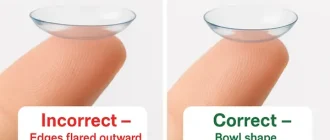The world of digital entertainment has seen a substantial evolution with the development of Virtual Reality (VR) technology. This fantastic advancement allows people to immerse themselves in a simulated world, making it a major hit, especially among gamers. However, this has also sparked concerns about the possible impacts VR headsets might have on eye health.
The Principle Behind VR Headsets
Understanding whether VR headsets could damage your eyes requires delving into how these devises work. Essentially, VR headsets create a 3D environment by displaying two slightly different images to each eye. This mimics the way human depth perception naturally operates, resulting in an immersive experience.
However, the proximity of the screen to the eyes and the necessity for the eyes to continuously focus and refocus can lead to eye strain.
Do VR Headsets Contribute to Eye Strain?
Complaints of fatigue, headaches, and dry eyes have resulted from prolonged usage of VR headsets. These symptoms are typically part of a condition known as Digital Eye Strain or Computer Vision Syndrome. The following are the key factors contributing to this:
- Close Viewing Distance: As VR screens are placed very close to the eyes, they require constant focus and adjustment of the eyes, leading to strain.
- Prolonged Use: Long hours of use without adequate breaks can add to eye strain.
- Poor Lighting: Using a VR headset in dim light perpetually dilates the pupils, adding to the strain.
The Potential Long-Term Impact
While the short-term effects of VR use are relatively well-documented, there’s less certainty about long-term impacts. The main concern is that extended VR use could potentially lead to myopia (nearsightedness) especially in children, however, more research is needed in this area.
Recommendations for Safe Use
Optometrists recommend implementing certain practices to minimize the potential harms of using VR headsets. These include:
- 20-20-20 Rule: After every 20 minutes of VR use, take a break for 20 seconds and look at something 20 feet away.
- Blink Regularly: Though it may sound obvious, frequently blinking can combat dry eye symptoms.
- Adjust Brightness: Keep the brightness of the VR headset at a comfortable level to reduce strain.
- Use in Well-Lit Conditions: Avoid using VR headsets in a dark room for long periods of time.
Fanal Word
While VR headsets can contribute to eye strain, following recommended preventative strategies can mitigate these effects. It is important to remember to balance time spent in virtual realities with time spent in the real world. As with all technology, moderation is key. Science continues to research the long-term effects of extended VR use, but the current consensus points more towards moderation and correct habits than a complete cessation of VR use.





